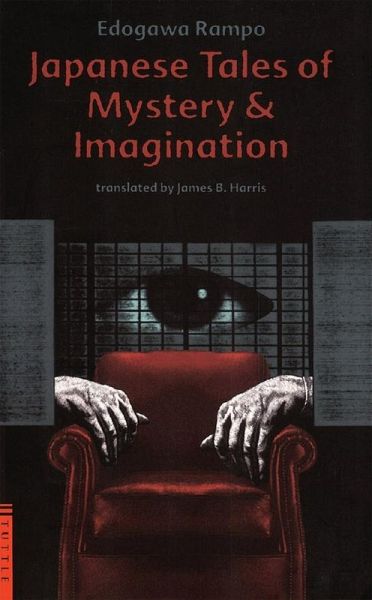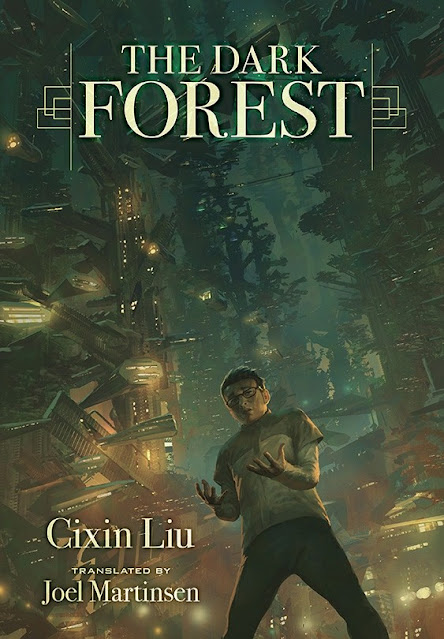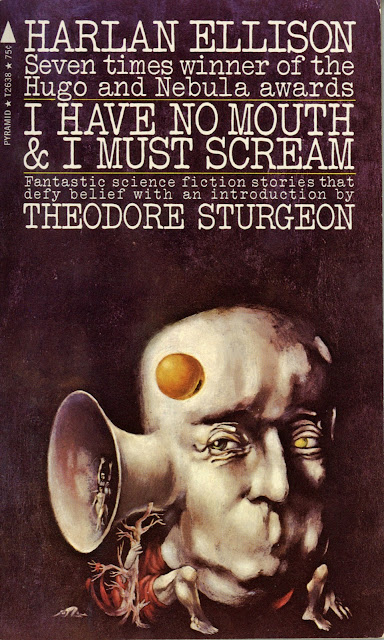Japanese Tales of Mystery and Imagination - Edogawa Rampo: My opinion with spoilers
1. Introduction
► Publication year: 1956
► Genre: Fiction, fantasy, horror, mystery, suspense.
► Themes: Japanese culture, crime, perfect murder, mirrors, obsessions, the human psyche, mutillation.
► Pages: 195
This is my first book by Edogawa Rampo (Hirai Taro). I read it in English and I liked it. I think it is well-written. Read my short, spoiler-free review on Goodreads.
2. Title
★★★★✩
You cannot help but think almost immediately on "Tales of Mystery and Imagination" by Edgar Allan Poe. In this case, the connections don't end here. Literary references to the works by Edgar Allan Poe begin with the pseudonym Edogawa Rampo and permeate almost every story in this collection.
3. Structure
★★★✩✩
The structure of the book is simple, with short stories and an illustration in the middle of each story. The stories are really short so you can perfectly read at least one in one sitting.
4. Themes
★★★★★
The themes in the book are interesting, absorbing. You get hooked quickly, with every story.
4.1. World-building
★★★✩✩
World-building was weak for some stories. You couldn't get immersed in the universe of some of the stories because the author didn't build it deep enough. Nonetheless, I didn't expect a deep immersion because these are short stories.
Some stories are predictable and follow the same structure and plot. Also, you can see clearly the influence of Poe in many stories, almost to the point where you don't enjoy them anymore because you had read better stories.
5. Style
★★★★✩
The style was consistent. The paragraphs and the stories were long enough and with the right amount of description and detail.
5.1. Dialogues
★★★✩✩
Dialogues were OK. I didn't expect much in terms of dialogues in short stories.
5.2. Technique
★★★✩✩
The technique is OK, somewhat similar to Edgar Allan Poe but less elaborated. The book is well-edited and it has a consistent, decent technique. You can read quickly and easily. Some tropes and literary tools are overused here and there and there is some degree of repetition that you can go "stark raving mad" before finishing the book.
5.3. Pace
★★★✩✩
The pacing is good and balanced. Again, these are short stories that work really well in overall terms.
6. Relevance
★★★★✩
I don't know Japanese culture so I wouldn't know how relevant this book is in cultural terms. I understand Edogawa had a big relevance in the genre in Japan and it was evident to me why.
I could feel some differences between Edgar Allan Poe and Edogawa Rampo in terms of the protagonists. Of course, Edgar was obsessed with women and the death of women in his tales because of his personal life.
7. Characters
★★★✩✩
Some characters are good, distinct, interesting, and/or consistent. My favorite ones were Tanaka and the author of the letter of the first short story.
Highlights
The author of the letter sent to Yoshiko in "The Human Chair".
Tokiko in "The Caterpillar".
Tanaka in "The Red Chamber".
The girl in "The Traveller with the Paster Rag Picture".
8. Depthness
★★★★✩
You can find yourself thinking about these tales at any moment of the day. Certainly, you get hooked and you are left wondering about mirrors, thieves, murders, big chairs, and everything. So, surely for me, they had an impact.
Some stories didn't age well and this is natural and expected.
9. Plots
1) The Human Chair
★★★★★
2) The Psychological Test
★★✩✩✩
3) The Caterpillar
★★★★✩
4) The Cliff
★★★★✩
5) The Hell of Mirrors
★★★✩✩
6) The Twins
★★★★✩
7) The Red Chamber
★★★★✩
8) Two Crippled Men
★★★✩✩
9) The Traveller with the Paster Rag Picture
★★★★✩
10. Endings
★★★✩✩
Some endings are weak and uninteresting.
Good endings:
1) The Human Chair
★★★★★
Decent endings:
3) The Caterpillar
★★★★✩
Conclusion
Good, entertaining work. You can get a good sense of what to expect from Edogawa, so this book it's a good start, I think. You won't invest much time or effort. Even if you don't like it at all, you won't feel remorse. The first short story is very good.
Recommended to:
Readers who are into the genre.
Readers who like the genre but haven't read Poe (Not many, I think). Read this first, then read Poe and you will be mindblown.
Casual readers. You can pick this book any time, anywhere. You can be reading this book on a country trip, a rainy weekend, or commuting to work.
Edgar Allan Poe fans. It is interesting to see how Edogawa adopted many things from Poe. If you are a hardcore fan, though, you will be disappointed because Edogawa is not as good as Poe, in any sense.
Readers who are learning a new language. If you are learning Japanese, this is a good option: Simple, stark prose.

















Comments
Post a Comment